You’ve built a fancy website that would give any firm a run for their money.
Great.
Now what?
Time to write the copy!
Website copywriting is one of the most challenging forms of copy, however.
It involves many different components: sales, SEO, branding, etc.
If you’re not the Stephen King of copywriting, I’m going to help you out today.
These are ten website copywriting best practices you can start using today to tighten up your writing.
What is website copywriting?
Let’s do a quick refresher.
Website copywriting is—as you could guess—writing sales copy that’s included on a website’s pages.
That would be a simple definition.
But, let’s dig deeper like a mole.
Writing copy for websites consists of many different processes and practices, including:
- Making a brand stand out from everything on the market.
- Communicating to customers what your values are and what makes you different.
- Positioning products/services as a solution to pain points.
- Creating emotion and resonating with a hyper-segment of users.
- Generating trust and authority.
- And more.
That’s a lot to do. I know.
There are precise techniques you can use to achieve all of these things and more.
Want to see?
Check them out. 👇
Website copywriting best practices
Okay. These are some of the best web copywriting best practices you can use.
I implement these on a daily basis while writing copy for clients or my personal projects.
Try them out and see the results for yourself. 😁
1. Use a content hierarchy
How copy looks is nearly as important as the copy itself.
This involves the font, font height, order, and other small details.
All of that forms a content hierarchy.
It’s not be confused with a logical flow. (Which you’ll learn later.)
Rather, it’s the strategic placement of content on a page, placing the most important information on top and trickling down to the least urgent.

The inspiring copy comes first. This is writing that generates hope, lust, greed, and appeals to primal emotions.
Because, after all, most of our decisions are made by the reptile brain without us realizing it.
That brings us to creating an emotional connection.
If you did the first part, this comes naturally. However, you also need to create a connection between you and the audience—not just with a product or solution.
This is done by establishing authority via trust badges, testimonials, reviews, branding, and quality.
The third part of the content hierarchy is teaching. Give users something new. Something fresh. (No, not your Air Jordan’s.)
Take a topic and put a unique angle on it. Provide new tools, data, resources, or examples.
As Mason Cooley once said, art is imitation and innovation.
That means it’s okay to get inspiration from others, but always innovate and make it better or you’ll get lost in the static.
Lastly, answer basic questions. Unless your target audience is Ph.D. Harvard graduates, they need to understand the basic information on a website.
These include:
- Who you are.
- Company history.
- Management and team.
- What makes you different?
- What products or services you offer.
- What are the features?
- What are the benefits?
- How much does it cost?
- What is the return and refund policy?
- How they can trust you.
- Do you have testimonials?
- Where can I read reviews?
Look at Samsung’s page for their new phone line:
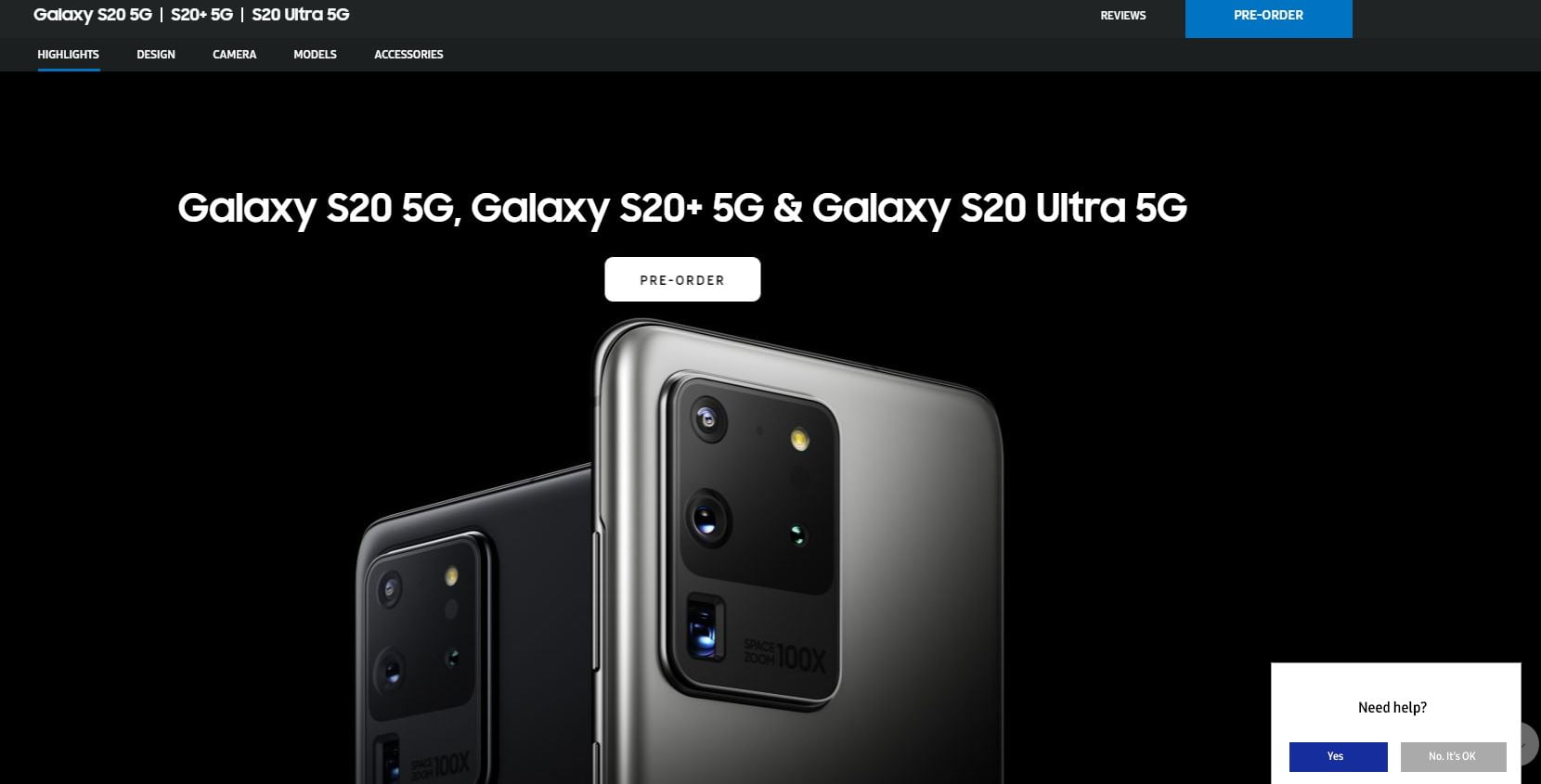
The first thing you see is a list of the models and a pre-order button. A.K.A the most important thing first in the case of an unreleased phone.
Then, Samsung positions its camera as a “revolutionary” experience along with high-resolution product images.
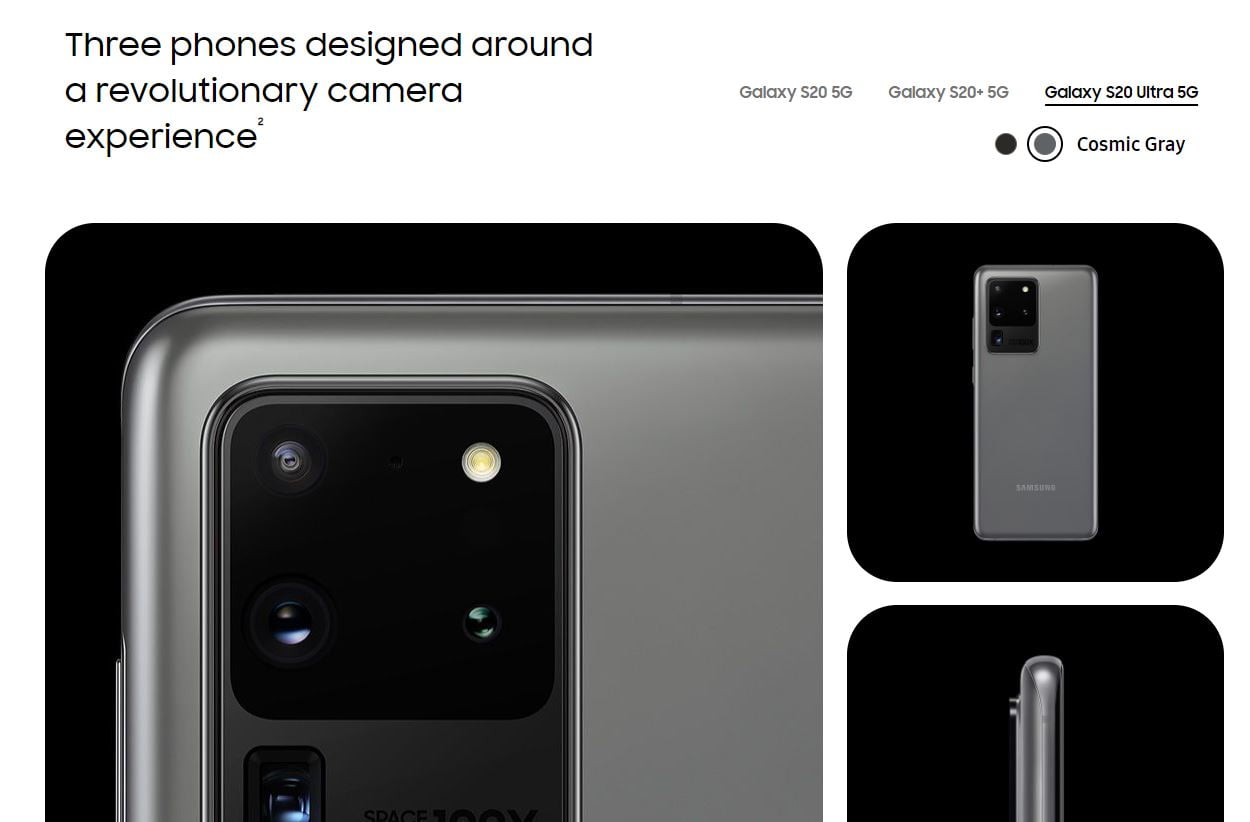
Scrolling down, we see more examples of what the camera can do and individual features.

Imagine they had started by showing off the camera.
It wouldn’t make sense, right?
That’s a content hierarchy. Depending on the exact page’s goal, strategically place the most critical information first.
You can learn more about this and other copywriting best practices in my online courses.
2. Calls to action above every fold
If someone is on the fence, you have to give them a little push.
That’s what we call a call to action, or CTA for short.
Calls to action are words or sentences that tell the user what action to take next.
This could easily be what makes or breaks conversions.
You can have the best website or landing page in the world, but a lack of CTAs will throw sales down the drain.
Marketers need to use a strong call to action that resonates with the specific buyer persona and campaign.
Calls to action vary in length, as well. They can be as simple as “Buy now” or “Get your free consultation today.”
Read my previous article on calls to action to see in-depth examples and strategies.
Nonetheless, some CTA examples include:
- Buy now
- Shop now
- Sign up
- Register
- Don’t wait
- Don’t miss out
- Get your coupon
- Claim your coupon
- Register now
- Register today
- Get your free X
- Try X
- Watch our X
- Learn more
- Watch video
- Etc.
All in all, it’s a statement that tells the reader what to do based on the content and offer.
More importantly, CTA’s need to be above the fold of every page. That means they are visible without scrolling like on Volusion’s website:
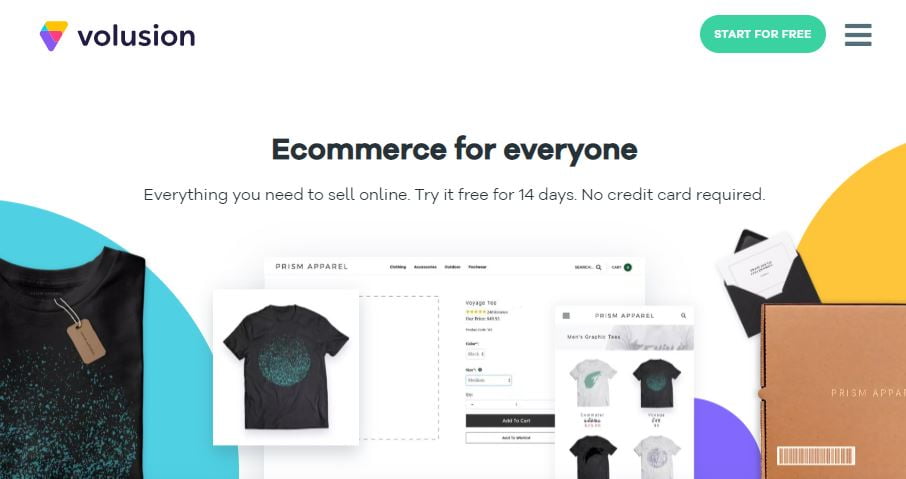
The “Start For Free” can be seen upon landing on their website.
Scrolling down, you are greeted by other buttons like “Learn More” and “Read Customer Stories.”
3. Polish off your SEO
A website without SEO is like a Ferrari without an engine.
Sure, it looks amazing. But, it isn’t going to do anything.
That’s why you need to understand the basics of on-page SEO or your website will sink to the bottom of the search engine ocean.
Moreover, 15% of all daily searches go to Google. If your search optimization is rusty, so will your bank account.
The first component of on-page is keyword research. It is the process of using specific terms to rank for them on Google.
You want to target keywords that would give the highest chances of customers finding the business.
Use a free tool like SEMrush to research keywords by entering a search term idea on the dashboard.

This will display data like:
- Monthly search volume
- Competition
- Cost per click
- CPC distribution
- Monthly trend

Pay close attention to the keyword suggestions, as well.
These will give you further inspiration for keywords to target.
You want a main keyword and secondary keywords for every page. For instance, you could do:
- Home page targets “Web design agency Houston.”
- Service pages target “Houston web design,” “Houston SEO,” and “Houston social media marketing.”
- Blog targets “Houston web design blog.”
- Etc.
But, you probably have one question at this point: “Where do I use the keywords?”
They need to be placed in very particular areas where Google likes to send its crawlers. These include:
- Title tags.
- Meta descriptions.
- URLs.
- Alt text of images.
- File names.
- Within the body of pages.
- Header tags.
The second part of on-page SEO is content quality. Google wants to provide users with the highest quality resources.
But, what makes content high quality versus garbage?
We first have to understand Google’s algorithm. Moz sums up some it nicely in this graphic:

Based on these findings, Google is looking for signals like:
- Content length, readability, uniqueness, and load time.
- Traffic to pages along with click-through rate and similar metrics.
- Social, press, and media mentions.
- Anchor text distribution and quality of link sources.
Copywriters can use this to their advantage by writing longer copy, focusing on readability, producing unique material, and linking out to notable publications.
Thirdly, great on-page SEO involves something outside of writing: user experience.
While content hierarchy, readability, and some writing techniques will improve the UX, there are some technical things that need to be added.
Otherwise, the site will be so poor in structure that nobody can read it to begin with!
And, once again, Google loves giving people a great experience.
Here’s a checklist you can run your website (or a client’s) through:
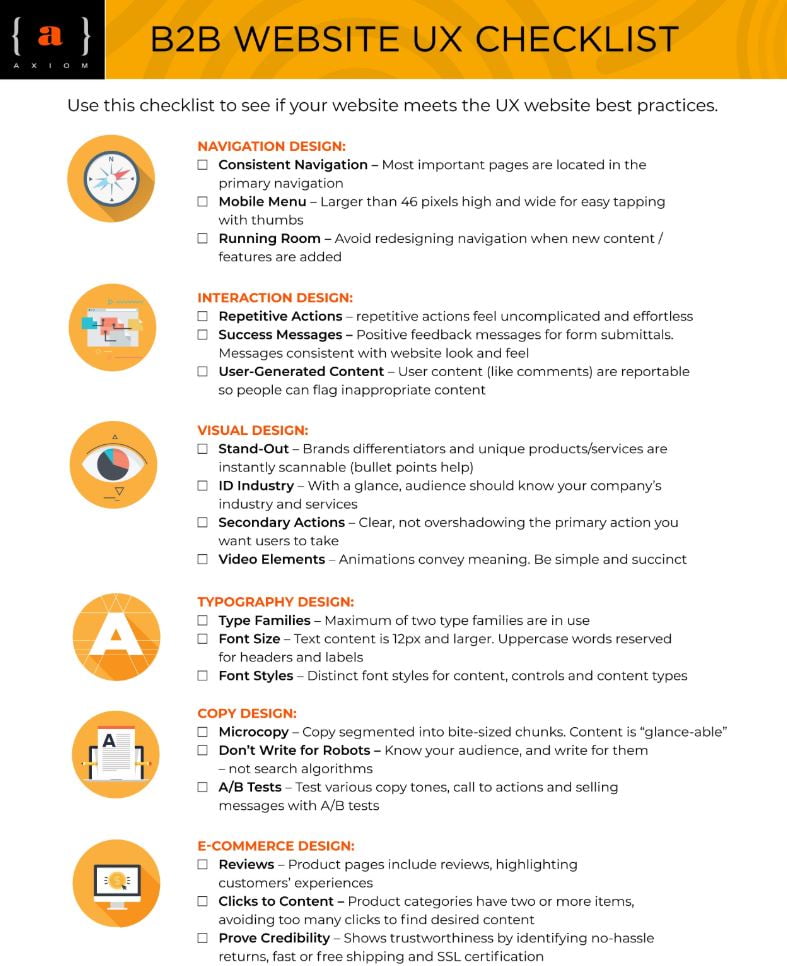
Some of the main elements include site structure, typography, navigation, and visual design.
4. Keep it concise
We’re not writing a newspaper.
We’re writing website copy.
And, that means we need to keep it short and concise.
Large paragraphs are like a wall that readers have to climb over.
It makes reading difficult, intimidating, and muddies intentions.
Copy needs to be reduced to the most important information for this reason.
If you can sum up something in a sentence versus two paragraphs, skip the latter.
This means the user spends less time reading and thinking and more time moving toward the sale.
Peep how Ogilvy does this on their Canadian website:

A sentence sums up what they do, and their portfolio is just as simple.
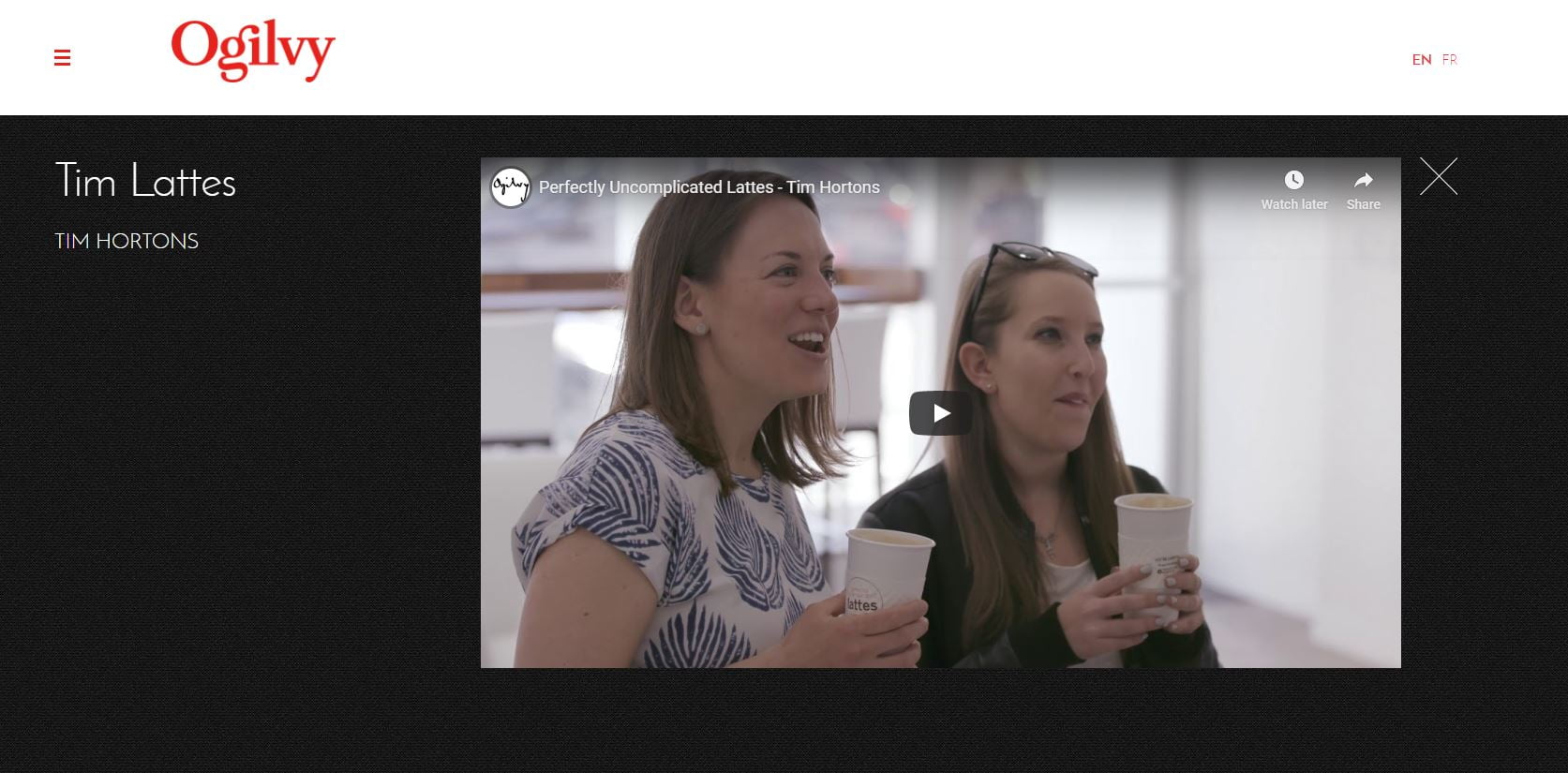
They could’ve written 1,000 words on the campaign and its achievements but let it speak for itself instead. 👍
Every time you go to clean up copy, audit what words or entire sections are unnecessary in achieving the end goal.
I recommend using the content improver tool from Jasper to speed up this process.

Just paste in sales copy into the text field, select an output amount, and click “Generate AI content!”
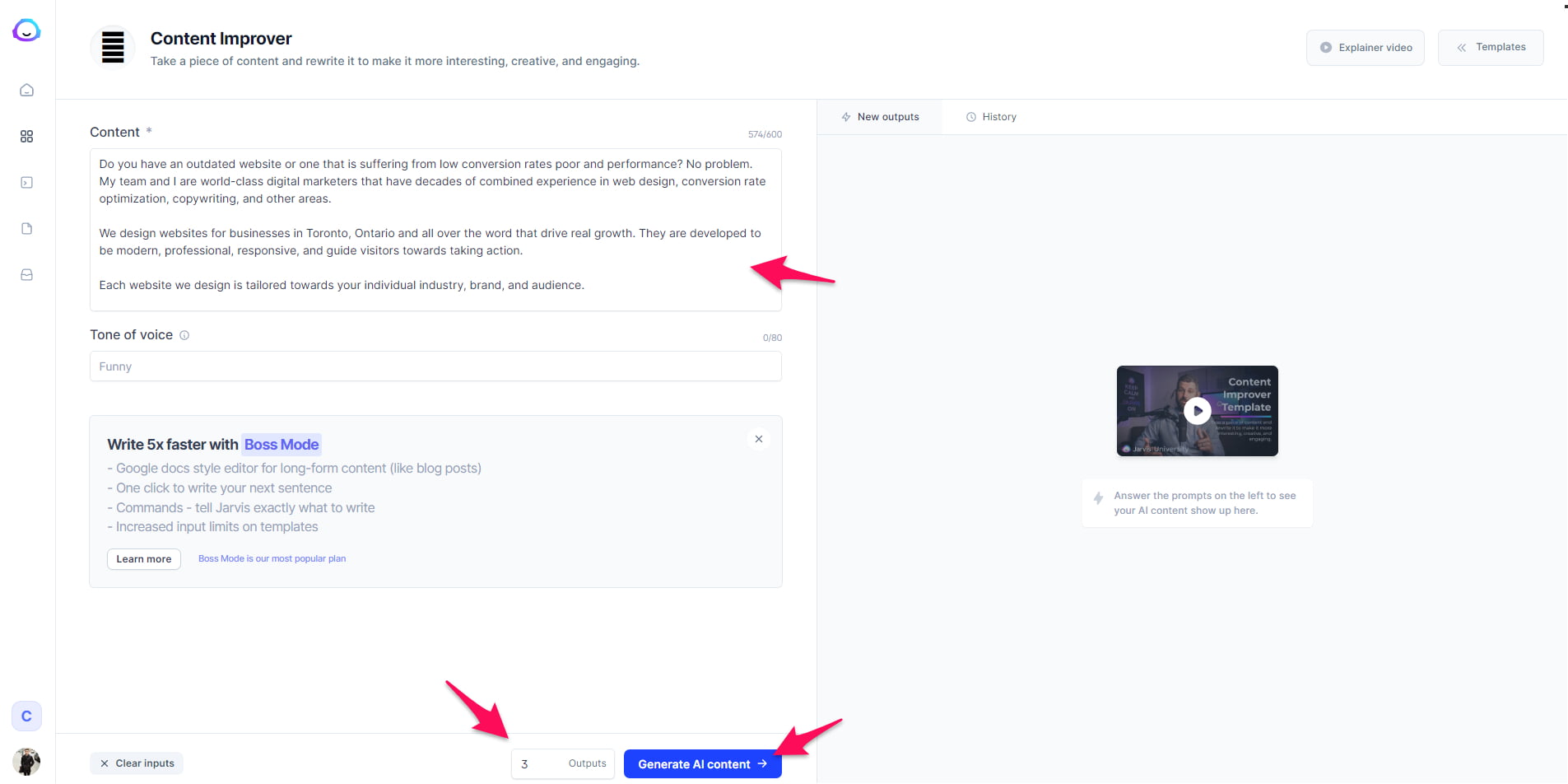
Copy one of the outputs and enjoy the concise sales copy.
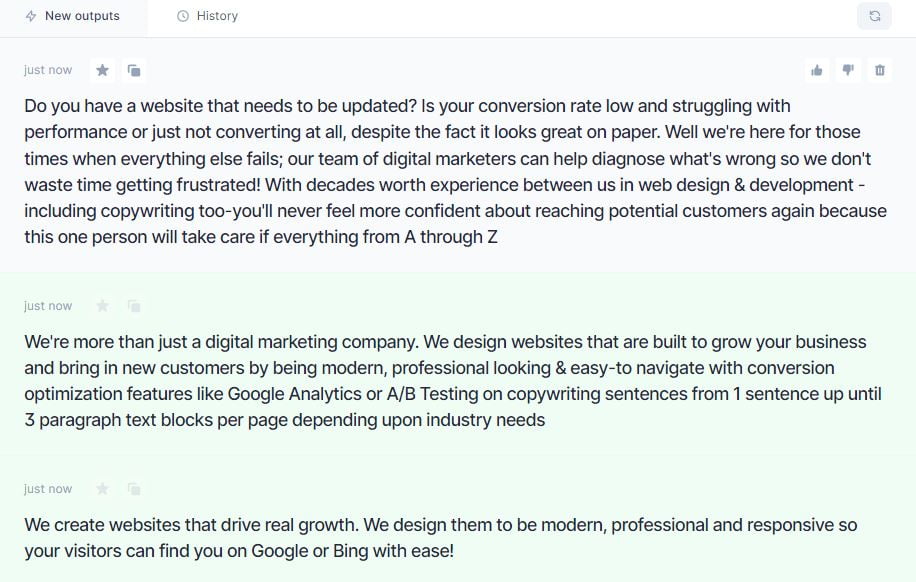
Let’s talk about the 5th website copywriting best practice next.
5. Write an interesting about page
It’s ironic.
The about page is supposed to be about your business, right?
Kind of. It should focus more on what you do and why that matters to the customer, though.
Otherwise, they’ll be heading out the door. A.K.A clicking the back button on their web browser.
Customers are selfish. They want to know what’s in it for them, and for a good reason.
They’re investing their hard-earned money and time in your company.
Ironpaper, a New York digital agency, is a prime example of what to do.
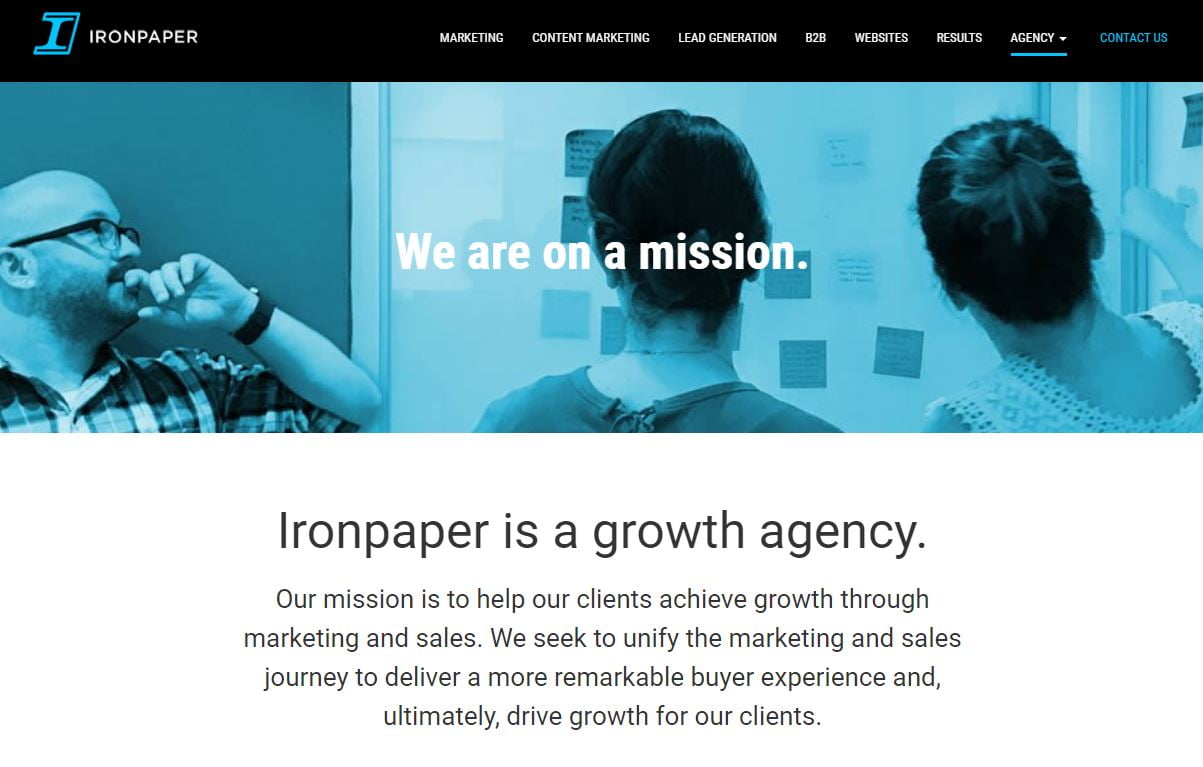
Their about page clearly states they help clients grow through marketing and sales while creating a remarkable buyer experience.
That’s infinitely better than saying, “We’re X company from Y location and offer Z services.”
Readers would be snoring more than you did in 10th grade physics class!
Creating an exciting about page comes down to three points:
- Identify who you’re writing for.
- Clearly state the benefits of working with you.
- Establishing authority through achievements, results, and accolades.
Follow those three steps, and I guarantee your about page will be better than 99% of what’s on the internet right now.
6. Does the order make logical sense?
Would you tell the barista at Starbucks, “Three creams and a tall black coffee, please?”
Of course, not!
You’d sound silly.
The order we say and write things matters. And, it matters a lot.
It completely changes the meaning of sentences and how they’re interpreted.
In the case of website copywriting, the order of material needs to flow logically.
This prevents readers from becoming confused or disinterested.
Take this page from Adobe Analytics, for instance:

It educates readers on what web analytics is and how Adobe’s platform offers it as a feature.
The page also includes sections for requesting a demo, a testimonial, extra features, and educational content.
The logical flow looks like this:
- Web analytics definition.
- How Adobe helps customers analyze web data.
- A case study of a satisfied customer.
- Further explanation of features.
- Content to educate users on why analytics are important.
If you switch around these items, it doesn’t make as much sense logically.
That’s why you need to assess if the sections you write for a web page provide the most seamless experience.
A great way to do this is to consider what order of questions and thoughts customers would be having.
Resolve them in that order, and you’ll have a perfect flow of logic.
7. Always mention the benefits, not just the features
Here’s a huge mistake most businesses make with their copy: they only focus on the features and forget about the benefits.
Features are what a product can do. Think factually; specs, colours, sizing, design, dimensions, etc.
Benefits, on the other hand, are what features can do for the customer.
Take my free copywriting course to learn more.
Let’s do an exercise. Take these features and think of what the benefits would be:
- Website copywriting services
- A canvas messenger bag
- An online course on digital marketing
Here are some benefits I can think of off the top of my head:
- Website copywriting services: increased web traffic, higher conversion rates, improved brand recognition, and competitive advantage.
- A canvas messenger bag: comfort, style, convenience, and utility to keep everything with you on the go.
- An online course on digital marketing: learn profitable marketing skills in a fraction of college tuition and time.
This is primarily important for product and service pages. However, wherever you mention these things, the benefit should be included.
After all, it’s what customers really want. 👍
It gets them excited. Interested. Emotionally stimulated.
Benefits are also one of the easiest wins every business can take.
8. Know who you’re speaking to
If I were to ask you who your audience is, could you honestly tell me?
Don’t sweat buckets.
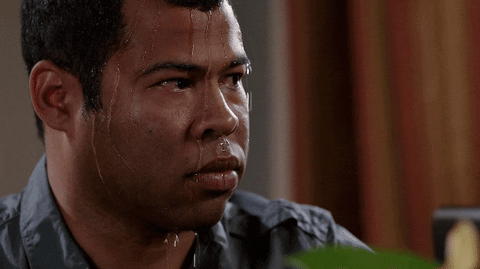
A lot of companies don’t know their audience like the back of their hand.
But, you should.
Why?
Because it allows you to write the most effective sales copy possible.
Copy that connects to their emotions … satisfies their needs … and makes you stick out from the competition.
This all stems from researching and documenting buyer personas into an ideal customer profile (ICP).
While demographics do have importance, I personally recommend as a professional copywriter that, you value wants, needs, and desires more.
These are what push people to buy products and take action.
Sure, you have to know their income, location, and job but psychographics is priceless while copywriting.
Where can you get this information?
The first is through secondary data. I suggest collecting market reports, reviews, testimonials, social media conversations, and analyzing them for patterns.
Who are these people? What do they ask about? Care about? What keeps them up at night?
Then, audit the product. What are its features and benefits? Unique value proposition? What pain does it solve?
9. Master the art of headline writing
The vast majority of people do one thing and one thing only when ti comes to consuming content: read the headline.
If it doesn’t excite them enough to continue reading or click an ad, you’ve lost them.
That means lost revenue, sales, and opportunities.
Luckily, all is not so grim.
If you master the art of headline copywriting, you can significantly increase sales.
Take Jim Edwards, for example. He was able to increase sales by 500% by simply tweaking the headline of a sales letter. Not bad, huh?
Let me run you through a few different headline templates you can use and customize to achieve these types of results.
The how-to headline
A classic.
The how-to headline is perfect for an ad or piece of content that educates readers on how to achieve a particular goal.
Maybe it’s to increase their income, lose weight, or have better relationships.
You start with “How to” and follow up with the goal readers are trying to achieve. An example is “How to Write Website Copy That Skyrockets Conversions.”
You can also append “in as little as…” to the end, making it, “How to Write Website Copy That Skyrockets Conversions in as Little as 15 Minutes.”
After all, who doesn’t want to achieve a goal in less time?
To really spice things up, overcome objections by finishing cop with “even if you…”
The final product would look like this: “How to Write Website Copy That Skyrockets Conversions in as Little as 15 Minutes Even If You Hate Writing.”
The X ways to get Y headlines
This template is great when you want to give readers steps or strategies to achieve a particular outcome.
For example, you could write the headline “The Best 5 Ways to Get a Crazy Ripped Body.”
I’d also consider adding “and avoid…” to the end of this headline to communicate how to avoid a pain point.
We could take the previous headline and turn it into “The Best 5 Ways to Get a Crazy Ripped Body to Avoid Feeling Ashamed.”
The X mistakes to avoid headline
Nobody wants to make a mistake.
That’s why this style of headline works so well.
You simply have to communicate to readers that they can avoid specific pain points by reading the copy.
An example is “6 Mistakes to Avoid For All Copywriters.”
The warning headline
Warning headlines are a great way to incite urgency and emotion in readers.
It’s like a mental stop sign.
Customers become a dear in headlights when they see it.
Don’t go overboard with these, though. It’s easy to irritate readers if there isn’t something significant to talk about.
Here are a few examples:
- WARNING: This One Thing is Killing Your Revenue
- WARNING: Don’t Even Think About Writing Copy Until You Know This Trick
10. Use future pacing to get customers excited
This is a neat trick from neurolinguistic programming, the study of how words impact the brain and behaviour.
Future pacing helps readers see themselves in the future.
As a copywriter, you can use this to get readers excited about what life would be like using a particular product.
Talk about how much better their daily life will be. How much more health, income, or happiness will it bring them? Walk them through scenarios through visualization.
You can also use future pacing to increase readership by reminding people what they will learn ahead.
For example, I commonly say something along the lines of “You will learn X later in this blog post” so readers are primed to continue reading.
Final thoughts on website copywriting best practices
Want to write web copy that gets customers begging to buy from you?
Publishing generic content won’t get you there. In fact, it’ll probably bore customers away.
Copywriters can produce epic content for web pages by first establishing a clear content hierarchy. Place the most important and impactful information first on every page.
Similarly, order the points and sections in a logical fashion. It needs to align with what customers are thinking and feeling.
Use strategic calls to action on every page that encourages readers to do something that contextually relates. (Don’t use “Buy now” on an about page, for example.”
Furthermore, learn what Google looks for when ranking pages. I like to tune into their official blog exactly for this reason.
Take the time to create an about page that helps readers understand why they should become your customers, and keep every page concise.
What are you waiting for? Go write some legendary copy or enroll in my copywriting course to get feedback and insider strategies.














